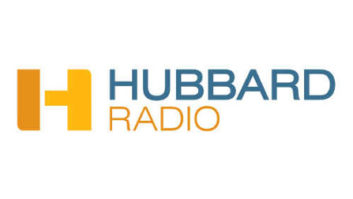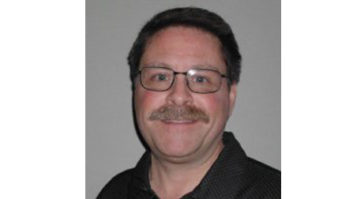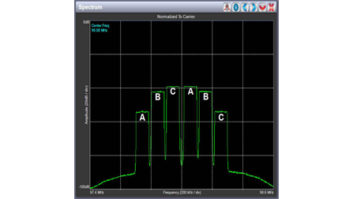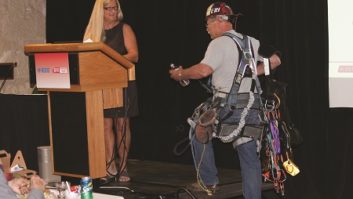IBOC Installations
Feb 1, 2006 12:00 PM
While stations transition to HD Radio, there are several decisions that need to be made that relate to generating the digital signal. Separate antennas, high- or low-level combining and other options exist, and the decision to use a particular method is determined by each installation. In some cases, a particular choice may be obvious. For other operations the choice may not be so clear. Radio magazine asked several stations about the options they chose and why.
Cox Radio-Tampa WSUN Split-level combining

Roswell Clark, CSRE CBNT MCSE, director of technical operations
Cox Radio-Tampa installed IBOC on three of its six Tampa FM stations during 2005. Plans were considered in general terms in the preceding years and the station took into consideration the eventual installation of HD Radio whenever major items for the stations were purchased.
Despite the best efforts leading up to the actual installation date, changes in technology and remaining limitations in resources at the time of implementation directly affected critical decisions. For WSUN, physical space in the transmitter room was a premium. The station needed to replace a backup transmitter, and there is only one antenna at the site. Fortunately, just prior to the installation, advancements in RF combining methods allowed creative solutions to be pursued. Split-level combining allowed us to keep the existing analog transmitter in service, and the Harris Z HD Radio transmitter supports can also be used in an analog-only mode (called C-mode), which allows it to also serve as a backup analog transmitter.
Another space saver is the Dielectric Dibrid switchless combiner. It takes the place of three discreet switches and the HD Radio combiner. An added benefit is the glitchless transition between modes at the push of a button.
Cumulus Broadcasting, Harrisburg, PA, WNNK Separate antenna
Dave Supplee, regional engineering coordinator

WNNK uses a Dielectric DCR-M interleaved antenna for analog and digital transmission. It features two bays for analog and two bays digital. The separate antenna method for IBOC was chosen for several reasons.
The station needed to replace the main antenna. The old one had failed so it made sense to install something for IBOC at the same time. Tower loading was not an issue because the IBOC antenna portion was not nearly as heavy as the main analog. The station also owns the tower, so there were no lease issues.
The digital antenna is fed with a 7/8″ Heliax, which did not add significant tower load, nor was it expensive. The analog antenna uses a 3″ Heliax.
Except for low-level combining, all the combined systems require a capital expense of a second transmitter. Generally speaking, power levels over 10kW TPO do not make sense to run low-level because of the inefficiency of the transmitter. The separate antenna approach is the most efficient–the digital transmitter only needs to overcome the line loss. In this case, the analog TPO is 23kW (on a 25kW transmitter), and the IBOC transmitter runs 240W. As an added benefit, the effect on the ac load and power bill was minimal. Also, the main (now analog) transmitter did not have the headroom to overcome the combiner losses.
I considered Split-level combining at the time, but it was still on the drawing board during our installation.
Cincinnati Public Radio WGUC-FM Low-level combining

Don Danko, CBRE CBNT, VP engineering and operations
The decision for WGUC to adopt and start broadcasting an IBOC signal was a direct result of long-term strategic planning that started before Ibiquity was formed. WGUC uses low-level combining to sum the analog and digital signals before it feeds the final amplifier. This method results in a one-transmitter design to meet the licensed transmitter power output (TPO), and it eliminated the need for a big, external, high-level RF combiner. The benefits of this type of system are less transmitter power consumption, less cooling load and less equipment cost. It’s less equipment to install and reduces the space needed within the transmitter room.
Low-level combining was the perfect solution for WGUC. Various factors were considered in this selection but the most import one was WGUC’s TPO. WGUC has an effective radiated power of 15kW, but with a five-bay antenna at 880 feet height above average terrain the station is licensed for a TPO of 7.1kW. When the station made the decision to install HD Radio equipment two transmitter manufacturers were shipping an HD Radio exciter and a solid-state transmitter that could produce the necessary power for WGUC to meet its required TPO. We chose equipment from Harris. Site preparation was completed and within two months the new transmitter arrived. The delivery truck pulled into the facility at 8 a.m. on July 26, 2003, and by 5 p.m. that day WGUC was the first public radio station in Ohio to broadcast an HD Radio signal.
Cox Radio Miami WFLC, WHQT, WEDR, WHDR Reverse-fed combiner
Mitch Wein, chief engineer
After 20 years it was time to replace the 10-station Miami FM master antenna system. HD Radio implementation was an integral part of our new system design. After reviewing various system design proposals, the Miami broadcasters–representing five major broadcast companies–voted unanimously for the ERI eight-bay, 32-element, multi-station directional antenna and combiner system. This system provided the most efficient and cost effective transmission scheme for simultaneous IBOC and analog operation with an optimized analog and digital pattern.

The master system is divided into two multiplexed branches with five stations on each branch. The stations are strategically grouped to eliminate the need for group delay compensation modules. Each station injects its IBOC signal via a 7/8″ transmission line through a circulator into the dummy load port of its respective analog combiner module. Further enhancement of the IBOC signals was achieved by using ERI constant-impedance bandpass filters with inductive loop coupling, providing a flat frequency response and maximum bandwidth for the reverse-fed digital signal.
The two branches and parallel 6-1/8″ transmission lines carrying analog and digital signals are mixed when they reach the antenna power divider. Each power distribution circuit feeds the respective slant left and slant right radiators. This combining scheme permits the use of low-power (200W to 300W) IBOC transmitters to provide comparable analog and digital optimized radiation patterns without additional HVAC, electrical and generator requirements.
In addition to the four Cox stations the antenna also hosts non-Cox stations WMGE, WPOW, WHYI, WMXJ, WMIB and WAMR.





